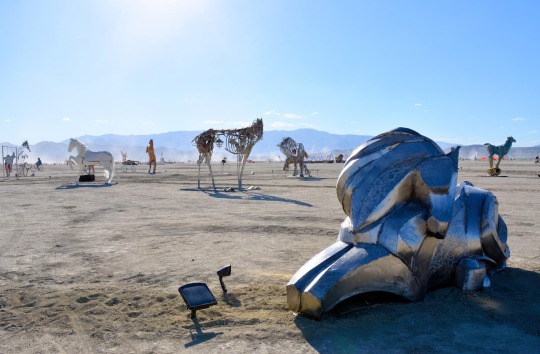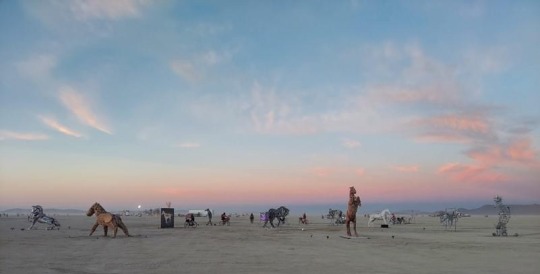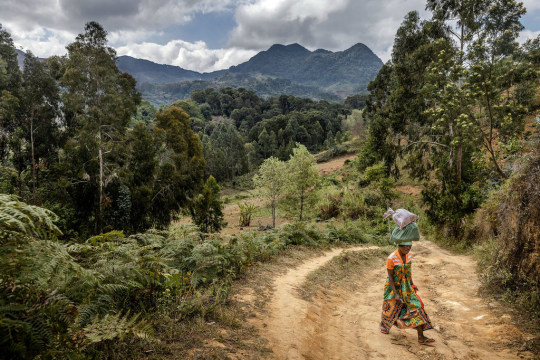#every healthy ecosystem needs diversity
Text

Style shift pt 2: everyone else
ft @decafguy00 ‘s Twig, @owl-bones ‘s Boss, @bonetrousledbones ‘s Edge, @alsojnpie ‘s Horrortale Papyrus, @save-star ‘s Duke, and a silly Undersell Papyrus for @phenom-lemon
#💗💗💗💗💗💗#<- throwing those like shuriken#initially the plan was for them all to be uf Papyri but sometimes plans change and sometimes not all of your mutuals have some version of#uf papyrus and that’s okay <3#every healthy ecosystem needs diversity#anyway#there is ONE MORE missing piece but I will get to it after I rest my hand 👍#updating the other one w/ a bg now too bc I learned a trick that makes it 9 billion times easier yaaay#snow and hail#uf papyrus monday#the shift is that this is my style. btw. in case that wasn’t clear bc I realize now that doesn’t seem very clear#undersell#other peoples ocs#sort of
103 notes
·
View notes
Text

#Wolves
I need to say a few words here about Wolves and their role in biodiversity. Because I like them, but most of all, they're a must in the wilderness.
Like every time we are standing on the edge of a hiking trail of a National Park, a protected territory, we all must beware of the consequences.
Au contrary to what most people may think of its surface, no matter how large it might be, isn't big enough to sustain a healthy Wolf population over a long term. This large Predator requires a massive home range to find the prey it needs to survive. Studies have shown that all the Wolf packs in Parks must travel outside its boundaries to meet their needs. And these large Canids are also victims of habitat degradation and fragmentation, not to mention deaths of human origin.
And for people who don't know, Wolves are considered as an umbrella species. Which means that efforts to protect it benefit the entire ecosystem, since the Wolf's territory encompasses the territories of many other species with a similar home range.
As for being an apex Predators, Wolves play an important role in biodiversity. Yes, their presence has been scientifically proven to increase the abundance and diversity of plants, mamal's Birds, Amphibiants, and Reptiles. Wolves help to control the amount of Prey on their territory; this prevents an overpopulation of herbivores, which could be detrimental to plant regrowth. Wolves also give a boost to several other animal species by leaving their partially carcasses for scavengers to feed on. Through its influence on the entire food chain and by curbing excessive grazing. So yes, the Wolf is a key species needed to preserve the balance of Ecosystem.
To conclude; Wolves are very wary and will run away from any human they detect through their remarkable senses of hearing and smell - they can sniff out their Prey from more than 2kms away. Several studies have shown that Wolves will try to avoid humans at all costs and flee when approached.
Just to say that all citizens have a responsibility to protect the Wolves.
#Wolves#Wolf#Wildlife Need Protection#IUCN#International Union for Conservation of Nature#ECCC#Environment and Climate Change Canada#FeederWatch#Count Feeder Birds for Science#NCC#Nature Conservancy of Canada#Nature Photography#Nature Canada#Wild Bird Photography#Wildlife Photography#Animal Photography#Mountainous Parts of the Northern Hemisphere#Canada#The RavenKeeper
205 notes
·
View notes
Text
Closing Loops in Soilless Gardening - Hydroponics and Aquaponics
What is the future of food production going to look like? Is the projected 10 billion people in 25 years, out of which two thirds will live in cities, going to require us to convert every square meter of arable land into intensive mono cultural farms? Please don't let that be true! There HAS to be some alternative. Fortunately, there are several. Two of them are different ways of growing plants without soil, a radically new method, which may be most appealing to urban food production.

image source
Hydroponics: Growing Plants in Water
When it comes to growing large amounts of food on a small area efficiently, hydroponic systems are often brought up as a solution. And the reasons sound pretty convincing: An efficient hydroponic farm uses 90% less water, and can yield 3-10 times the amount of produce per area, with 7-14 growth cycles in a year. IMPRESSIVE! But before getting too excited, let's not forget: the devil is in the details! It's worth looking into under exactly what conditions those plants grow, being fed by what light, and most importantly which nutrients, and where they come from.

image source
The basic concept, however, of growing plants vertically, in mostly water, with some kind of substrate, such as clay balls or vermiculite, is actually a pretty nifty way to grow food where there are no fields. The most basic form of this may be the Windowfarm technique, which I experimented with myself years ago in my Budapest apartment. Going to Shanghai, the whole idea seems to be taken to a whole new level.
https://static.dezeen.com/uploads/2017/04/sunqiao-urban-agricultural-district-Sasaki-architecture-industrial-china-shanghai_dezeen_hero-b.jpg
image source
Is That Really Sustainable? Or Even Healthy?
… not to mention, does hydroponics even fit into Permaculture? Because let's be honest: with a system that needs to be constantly managed and monitored you could not be further from a self-supporting ecosystem. Also, what exactly do those plants get to eat? The typical N-P-K made industrially out of petrochemicals? Most likely. So while it certainly reduces the transport related drawbacks, hydroponics is by no means energy efficient, and the nutritional value won't be any better than your most industrially grown veggies.

image source
How Does Aquaponics Compare?
Okay, so let's bring in the fish! For those not familiar with the difference between the two systems, aquaponics is the combination of hydroponics and aquaculture, which are simply fish farms. Having fish in a tank, they will naturally defecate into the water, requiring it to be changed regularly. Plants, however love to eat those nutrients that the fish excrete. Or to be more exact, they feed on the nutrients that have been converted by bacteria and other microbes. The ammonia will turn in to nitrites, which in turn become nitrates, that is food for the plants.

image source
So running the water from the fish through the plants growing substrate will on one hand feed the plants, as well as clean it for the fish to enjoy it again. So the system already closed a few loops there, making it more sustainable than just mere hydroponics. Also, the inclusion of microbes already offers a more diverse environment, bringing the system a bit closer to an ecosystem. But let's not get ahead of ourselves: Aquaponic systems still need close monitoring, as they are still a far cry from a self sustaining ecosystem of let's say a pond. Also, the water circulation / aeration is most likely going to require a pump, and depending on the exact setup of the system, maybe artificial lighting for the plants. All these aspects add to the energy requirement of the aquaponic system.

image source
A Truly Closed Loop? Consider the Food of the Fish!
When praising the sustainability of aquaponics, one thing that mustn't be ignored is the source of the fish food. Just like with the hydroponic systems, where the food for the plants or the fertilizer is considered, we can't ignore the feed we give to our fish to eat. If it is the same industrial feed, we may as well have kept to our hydroponics. Not true, since including fish already makes our system more diverse. So instead, let's continue in that same direction. What do fish eat? What is good for them? How can we grow that food ourselves?

image source
Making Your Own Sustainable Fish Food
Here I could probably start a number of individual posts, since talking about fish food is like opening up a can of worms. But fortunately, I already have a number of appropriate things written. Talking about worms, by the way, anyone who has been fishing knows that they are a favored delicacy, and anyone who composts will have no shortage of them. Since worms are mostly vegetarians, and many of us eat meat, it may have been a bit difficult to properly compost greasy, meaty, bony food wastes. That's where black soldier flies come in, whose larvae are also frequently mentioned for fish food. I still need to try growing those guys. As for green plants for the fish, duckweed makes also good fish feed, again something I have no experience with. What I do know, though, is spirulina, which is also super rich in nutrients, and I would be surprised if the fish didn't like it. So I can see throwing some composting worms, black soldier fly larvae, and spirulina into a blender, to make some great nutritious fish food. At the moment this is very theoretical for me, though.

image source
Don't Give Up the Soil Completely
So does this mean we should all focus on setting up our most sustainable fish-plant-compost combo cycles? Hells yeah! But please not at the expense of everything else! Soilless gardening, as exciting and revolutionary as it may sound, is still that: without soil. And let's face it: neither us, nor our beans and tomatoes, have evolved to live entirely without soil. That just seems wrong. Even in a small urban apartment it's worth having a bit of soil on your roof, balcony, or window sill, where you can dig your hands into a world of healthy microbial diversity on occasion. And if you do have the space, by all means, set up a pond, a dam, or another aquatic ecosystem, where fish, and frogs, and dragonflies, and numerous other species can live together without relying on our management. Apart from looking pretty, they will also provide food for us, that is nutritionally superior to anything industrially grown.
Sources: 1, 2, 3, 4, 5, 6, 7, 8
115 notes
·
View notes
Text
Mustangs and…Burning Man?
From the Nevada Bureau of Land Management Facebook

A new herd of wild horses is descending on the Black Rock Desert for 2022’s Burning Man festival.
The Wild Horses of the American West project is rounding up more than a dozen life-size sculptures from local and international artists to bring awareness to environmental concerns surrounding the West’s wild horses.

“Everyone loves horses. Wild horses are beautiful,” said organizer Adrian Landon. “But the bottom line is they need to be managed.”
Landon stated, "the complexity and diversity of this project metaphorically reflects the many facets of the issue itself, and emphasizes the natural beauty, grace and majesty of horses. Stetson said, "the sculptures materialize the importance for us to find swift and proactive common ground and solutions that will keep sustainable numbers of healthy wild horses on the range and in balance with the ecosystem."

[One of the artists,] a 34-year Air Force veteran and Reno native uses art as a form of therapy. He compiled his piece from all found materials, either from the desert or dumpster diving in Reno.
“I really discovered making things helps my demons inside,” he said. “I enjoy going and finding: the hunt for the scrap metal, then the build.”

He describes his horse as hungry, pregnant and kind of skeletal. He worries that too many horses in the desert will lead to real-life versions of his sculpture.

“They’re everywhere now. It used to be a rare treat and rarity to see them. Now, you drive around every day and see them,” he said. “I love them, but it’s a lot.”



#Nevada#BLM Nevada#BurningMan#PublicLands#Wildlife#WildHorses#WildHorseAdoption#WideOpenSpaces#WorkPlayExplore#Wilderness#Rivers#OffRoading#Fishing#Hunting#Traditions#Recreation#Camping#Biking#Mountains#Desert#SilverState#BattleBorn#blm mustang#mustang horse#horse art#art#burning man#burning man 2022
132 notes
·
View notes
Text
youtube
Copied from the transcript:
“Beginning with the first essential concept for a library economy, usufruct refers to the freedom of individuals or groups in a community to access and use, but not destroy, common resources to supply their needs. This is as opposed to the limitation of access based on exclusive ownership.
“Libraries allow you to access and use books when you need them and encourage all of us to be good stewards of the books we borrow, taking care of it when we have it and returning it when we’re done, because it belongs to all of us and should be readily available for use. Imagine this principle applied to libraries of decor, libraries of furniture, or libraries of tools. Perhaps you would borrow cushions, couches, and paintings to suit one interior design taste for a few months before switching it out and trying a new style. You might borrow a shovel from the tool library to get a permablitz done one weekend and return it when you’re done so someone else can use it when they need it. Alternatively, you can keep it for as long as you want to use it. All without having to produce excessively or leave stuff wasting away in storage.
“If we want to live sustainably, we need a library economy. We need an economy based on usufruct that incentivizes producing enough lasting, durable stuff that everyone can share and use when they need it, instead of producing around planned obsolescence and excess, wasting crucial time, energy and resources. A library economy would be an essential component in a move towards degrowth.
“The second essential concept for a library economy is the irreducible minimum, which is the guaranteed provision of the means necessary to sustain life, the level of living that no one should ever fall below, regardless of the size of their individual contribution to the community. This includes access to adequate food, water, shelter, clothing, education, and healthcare.
“Libraries as they exist now provide free access to knowledge, but knowledge is only one component of an individual’s and a community’s self-actualisation, which a library economy should be organised to help reach. Libraries of consumables like food, drugs, and toiletries may be difficult to imagine, which is why in addition to libraries of things, a library economy should also have dispensaries of necessities. Farming cooperatives, in collaboration with cooking collectives, could work to ensure the entire community is provided with a range of healthy food options from the local and regional gardens, farms, and food forests. The popular assembly could organise with building cooperatives to establish a range of housing options to accommodate the needs of each and every member of the community. An emphasis on slow fashion, by a broad and diverse network of designers and tailors, as opposed to fast fashion, would ensure that everyone’s wearing clothing that lasts in the styles that they like.
“A library economy would require a vast reorientation of our priorities from the centrality of capital and competition to the centrality of humanity and cooperation, which brings us to the final core concept for a library economy: complementarity.
“Some people are abled, some people are disabled. Some people are bakers, some people are shoemakers. Some people will farm and some people will sing. People will have a say in how they labour and how they leisure. None of them need to be defined by or limited to the things that they do, but all should find joy or satisfaction or accomplishment in the things that they do for the sake of doing them.
“Together, we will have all the bread, shoes, veggies, and songs we could ask for. And for the things that no one enjoys, as I said in my video on a post-work society, we can find ways to rotate, gamify, or transform the tasks that need doing to make the drudge less drudgerous.
“A library economy should be based upon a complex social ecosystem that fulfills the many necessary roles a society needs filling. Complementarity is a way of looking at non-hierarchical differences within a society as something generative, where each person contributes a small part to an outcome greater than the sum of its parts. Complementarity can be found within communities, ecologies, technologies, and even typical libraries, both in the relationship between libraries and their patrons and in the roles that libraries fulfill, such as research, information architecture, and collection management. Our approach to nature must similarly be based in complementarity. Rather than maintaining an antagonistic, dominating relationship with first nature, we should strive to find a complementary melding of first and second nature, generating a third nature that is reciprocal and sustainable."
...
“Now imagine what a world based on a library economy would look like. Perhaps it would draw some inspiration from the 5 Laws of Library Science, first conceived by Indian librarian S. R. Ranganathan in 1931.
“The first law is that books are for use. Things are meant to be used, not hoarded. Made accessible, not shut away. Preservation and storage are important, Ranganathan himself noted, but more important than that is that consideration is paid to access-related issues, such as location, hours of operation, comfort, and the quality of service.
“The second law states that every person has their book and the third law declares that every book has its reader. Applied more broadly, this means that we should strive to develop a broad collection of things, whether furniture, decor, books, vehicles, or housing that would serve a wide variety of needs and wants, no matter how niche, understanding that those sorts of accommodations are generative of abundant life.
“The fourth law says that we should try to save the time of the user. Libraries require a lot of coordination and effort to maintain, even more so if we intend to apply their concepts upon broader society. Thus, it is vital that we develop systems, services, applications, workflows, guides, and frameworks that allow us to most efficiently manage the resources of the libraries, allowing us to do more with less.
“Lastly, the fifth law reminds us that a library is a growing organism. The aim of a library economy should never be to rigidly establish itself and continue as is. A library economy must be dynamic, ever growing, and evolving in both the quality of the collections held and services provided and in the quantity of those who are effectively served. The project is never complete.”
#Youtube#library#library economy#socialism#communism#anarchism#private property#biopic#theory#resources#reaux speaks#educational equity
57 notes
·
View notes
Note
did you see the recent research out of Edinburgh about 90% of the plankton in the atlantic being dead? (it's on grubloved's blog if you havent read it but no pressure to go looking for it). Paraphrasing: much worse than we thought, and while humans could adapt socially and technologically to climate and extreme weather, mass marine death is a near-certain death sentence. Wondering if you've seen anything to the contrary? I feel like every time I'm like "whew I can do this locally and advocate for this and look at this new landmark goal reached" i learn something like this and it makes me feel like launching myself into the sun
Okay so...I've read the article and its very scary sounding. ---And here is the actual study. I would want more confirmation from other scientific teams, as its always good to have more data. Has anyone replicated their findings? What about the other oceans? Also, there are many, many different species of plankton--I would be interested if there were certain ones that seemed to show more resilience than others.
There is a ton of research being done around the ocean and the impacts climate change is having. This also came out recently- its a 'global horizon scan of issues impacting marine and coastal biodiversity conservation'.
All things are connected. So many people care about the oceans and are working on these problems. You can be one of them. Nature is adaptive and capable of so many incredible things. Things move slowly. But a little bit of change goes a long way. We've seen it happen--when we act, we can do incredible things--like bring species back from the brink of extinction, like patch up ozone holes, like revitalize entire ecosystems.
It's very, very easy to despair and give up hope because there is so much bad news and awful things happening. The fact is that the climate crisis has been here and we're still struggling to respond because of the grip capitalism has on our society. I worry all the time for the future. We should be afraid of this and we should keep searching for new information and we need to keep changing. Be upset about it and share it with more people.
But, there is no point without hope. We have no other options but to do better. For the oceans, its inhabitants and ourselves.
--
#climate crisis#ocean acidification#ocean#plastic pollution#water pollution#plankton#atlantic ocean#asks#marine conservation#ocean preservation and conservation
39 notes
·
View notes
Text
Healthy forests, healthy planet, healthy humans.
youtube

Forests are often called the lungs of the planet, because they absorb harmful carbon dioxide and produce life-giving oxygen so it’s no exaggeration to equate healthy forests with healthy people, the theme of this year’s International Day of Forests.
Covering 31 per cent of Earth’s land and providing a home to 80 per cent of all land-based species, forests are crucial to human health and well-being, but their loss across the planet is threatening people everywhere.
Here are five things you need to know about the age-old and ever-growing interlinked relationship between forests and human health.

CityAdapt - Forests are key to building climate resilience.
1. Carbon sinks combat climate change
Forest ecosystems keep the planet healthy by regulating the climate, rainfall patterns, and watersheds and crucially provide the oxygen which is essential to human existence.
Healthy forests help to keep climate change in check by acting as “carbon sinks”, which annually absorb about two billion tonnes of carbon dioxide, the gas which is contributing to climate change and the increase of temperatures globally.
The rapidly changing climate is threatening the very existence of people in many different ways: through death and illness due to extreme weather events, the disruption of food systems, and the increase in diseases. Simply put, without healthy forests, people around the world, especially in the world’s most vulnerable countries, will struggle to lead healthy lives and maybe even to survive.

UN-REDD Forest products are processed into medicine in Viet Nam.
2. Nature’s pharmacies: from masks to medicine cabinets
From masks to medicines, forest products are used around the world every day. As many as 80 per cent of developing nations and one quarter of developed countries depend on plant-based medicinal drugs.
Forests contain about 50,000 plant species used for medicinal purposes by both local communities and multinational pharmaceutical companies. For millennia, forest dwellers have treated a range of ailments using products they have harvested. At the same time, many common pharmaceutical medicines are rooted in forest plants, including cancer-treating drugs from the Madagascar periwinkle and malaria medication, quinine, from cinchona trees.
The One Health approach, launched as part of the UN response to the COVID-19 pandemic, recognizes that the health of humans, animals, plants, and the wider environment, including forests, are closely linked and interdependent.

© FAO/ A woman carries goods through Uluguru Nature Forest Reserve in Morogoro, Tanzania.
3. Dinner for 1 billion people
Nearly one billion people globally depend on harvesting wild food such as herbs, fruits, nuts, meat, and insects for nutritious diets. In some remote tropical areas, the consumption of wild animals is estimated to cover between 60 and 80 per cent of daily protein needs.
A study from 43,000 households across 27 countries in Africa found that the dietary diversity of children exposed to forests was at least 25 per cent higher than those who were not.
In 22 countries in Asia and Africa, including both industrialized and developing countries, researchers found that indigenous communities use an average of 120 wild foods per community, and in India, an estimated 50 million households supplement their diets with fruits gathered from wildland forests and surrounding bushland.

UNDP Timor-Leste / Communities in Timor-Leste are helping to restore mangrove forests.
4. Forests are crucial for sustainable development
Forests provide goods and services, employment, and income to perhaps 2.5 billion people worldwide; that’s around one third of the global population.
Keeping forests – and humans – healthy is also at the heart of sustainable development and the 2030 Agenda. Woodlands play a key role in advancing progress across the Sustainable Development Goals (SDGs), including:
SDG 3 Well-being: Woodlands feel good. Studies show that spending time in forests can boost immune systems while elevating positive emotions and lowering stress, blood pressure, depression, fatigue, anxiety, and tension. Human health and well-being depend on the natural environment, which provides such essential benefits as clean air, water, healthy soils, and food.
SDG 6 Water: Forests play a filtering role in providing freshwater. About 75 per cent of the world’s accessible freshwater comes from forested watersheds. By feeding rivers, forests supply drinking water for nearly half of the world’s largest cities. Threats to forests could trigger water shortages and put global freshwater resources at risk for people across the world, which are among urgent issues addressed at the forthcoming UN 2023 Water Conference.
SDG 13 Climate action: The woods buffer the impacts of storms and floods, protecting human health and safety during extreme weather events. For centuries, forests have acted as nature’s socio-economic safety nets in times of crisis. Sustainably managed and protected forests mean enhanced health and safety for all.

Deforestation continues despite international calls to protect forests.
5. Forests need protecting
The wide-ranging benefits of forests are well known, but that doesn’t mean they are offered the protection that they perhaps deserve. Fire, insect-damage and deforestation have accounted for up to 150 million hectares of forest loss in certain years over the last decade, that’s more than the landmass of a country like Chad or Peru. The production of agricultural commodities alone, including palm oil, beef, soy, timber, and pulp and paper, drives around 70 per cent of tropical deforestation.
Many governments have adopted forest-friendly policies, and others have increased investment in woodlands and trees. Local communities and actors are making their own strides, sometimes one tree at a time. The UN established the Decade for Ecosystem Restoration (2021-2023) and its agencies are harnessing partnerships with local to global stakeholders to better protect forests, from planting three million trees in Peru to empowering young women to work as community forest rangers to protect illegal fauna trafficking in Indonesia.
Established in 2008, UN-REDD is the flagship UN knowledge and advisory partnership on forests and climate, supporting 65 partner countries. Building on the expertise of the UN Environment Programme (UNEP), UN Development Programme, and the Food and Agriculture Organization (FAO), the initiative has, among other things, seen member countries reduce forest emissions at levels equivalent to taking 150 million cars off the road for a year, ushering in a lot of more fresh air.
For guidance on creating an enabling environment in which people can benefit from all woodlands have to offer, FAO offers recommendations alongside a closer look at many key interlinkage between forest and human health in its report, Forests for human health and well-being
#UN-REDD#FAO#UNDP#UNEP#International Day of Forests#21 march#Forests and health#sdg13#SDG15#intlforestday#vegetation#forestry#Youtube
4 notes
·
View notes
Note
I've litterally gotten 3 videos on tiktok fyp from people talking about how mustangs need to be rounded up because they're starving to death in the wild and their an invasive species and helicopter roundups are the most humane way to do, its like...
1) There is no way in hell that running horses, some of them being foals less than a week old, across rocky terrain with a helicopter for miles is the only way to round them up, and even if it was, it's by no means humane.
2) If wild horses are really starving and in horrible condition, then why is it that the only times I see photos/videos of them looking horrible, it's specifically on videos SUPPORTING the round ups. Even in videos of the actual round ups or photos of horses that have been rounded up recently, those horses look like their in better condition than some domestic horses. So, where are all those mangey skeletons that round up supporters are always showing?
3) While wild horses arnt technically part of the original ecosystem, they've been here long enough that they do have a part in nature. They provide food for predators, and promote plant diversity by acting as natural fertilizers for the land. Do they have negative effects as well? Sure. But so does ANY animal in natural environment. And we don't go rounding them up.
4) Lets say that all this is true. That wild horses are starving, that helicopters are the only way to round them up, that they are detrimental to the environment. Lets ASSUME all of that is true. Why is it none of these pro-round up people mention that the BLM basically pays people to send wild horses to kill pens? It has been reported over and over, how the BLM pays people to take horses to train them, and alot of these horses end up in kill pens and auctions, completely untrained, and they do nothing to tighten their rules or make sure that these horses are actually going to good places. If the BLM is going to take these horses from the wild and pay people to train them, the very least they can do is do background checks and ensure that these horses are actually going to a home are being worked with, rather than just shipped to an auction or kill pen. And the alternative to that is what? Being put in long term holding pens and just standing there till they die?
Even the horses in holding pens arnt automatically safe. There's been video evidence that Pen #8, a holding facility thats usually considered one of the better corrals, had coyotes wandering around several pens with pregnant horses and recently born foals, and a horse that was so lame it was struggling to walk, as well as several other horses in distress. Even when a sanctuary reached out the owner of the corral and offered to buy them or get them medical help, the owner of the corral declined their offer. Keep in mind, this sanctuary has to have YEARLY inspections by the head of the BLM, yet they allow their own holding facilities to put young and injured horses in danger with no veterinarian help.
Not to mention the amount of horses that the BLM themselves put down after the round ups. They have been reported to put down blind horses that survived perfectly fine on the range. And in a recent round up, out of the 22 horses euthanized, 11 were cremellos, most of whom, acording to advocates for this herd, perfectly healthy. This is possibly linked to the scientificly disproven belief that the cremello color is linked with genetic mutations.
But what really ticks me right off? The BLM has this program known as TIP training. Tip stands for Trainer Incentive Program. People who are reimbursed by the BLM for the training of wild horses and then marketing them to rehome them. Every single video that I saw supporting the BLM and the round ups, was made BY A TIP TRAINER! Every. Single. One. Most of them even straight up said they were TIP trainers. So of course they're gonna push this idea that mustangs are starving in the wild. That theyre invasive and damaging the enviroment. Of course they're gonna support the round ups. They're litterally getting paid to do so.
Sorry I just had to rant, this has been pissing me off for a week and I needed to get it out there.
You got it, anon. Every single word of this.
It's a cruel, evil, indefensible bloodbath that happens for no other reason than to appease ranchers who want to graze their cattle on public land. And people eat up every lie they're told.
8 notes
·
View notes
Text
Every year on 23rd of March, the bear is celebrated around the world.
World 🌎 Bear Day 🐻
Like other large carnivores, bears are often misunderstood. Frequently, they are depicted and imagined as scary, aggressive animals. Let us change that view and get rid of the myth surrounding bears.
We should not be afraid of bears. Black bears kill less than one person a year on average. They usually mind their own business, even female bears with cubs. One problem is the media sensationalism of an attack, if it really happens. Of course, like with any wildlife, you should not disturb it and keep your distance. Mother bears will defend their cubs if necessary and if they feel threatened.
Bears, as other predators, are important for our ecosystem. They keep it clean and healthy,In total, there are eight different bear species.
They live on the American continent, Europe, Asia and the Arctic. These are the American Black bear, the Asiatic Black Bear, the Giant Panda, the Malayan Sun Bear, the Sloth Bear, the Spectacled Bear, the Brown Bear, and the Polar Bear.Bears are often widely misunderstood and misrepresented by the media and the public. Usually, if they do not feel threatened and are not accustomed to people, they just go about their way.
Most of the bear species around the world are threatened and need to be protected. World Bear Day is used to focus on all the diverse issues regarding the species; it is used to protect them, spread the word about them and change the bears’ image.
Take Good Care Of The Mighty Bear 🐻 For Many Generations To Come
Happy World 🌎 Bear 🐻 Day



3 notes
·
View notes
Text
Which Financial Companies Do Not Require an NBFC License?
The Indian financial landscape is a bustling marketplace filled with a diverse cast of characters. Non-Banking Financial Companies (NBFCs) are some of the key players, offering a wide range of financial products and services that go beyond the realm of traditional banks. But when it comes to licensing, things can get a little confusing. Not every financial company needs the standard NBFC license issued by the Reserve Bank of India (RBI). So, who gets a free pass? Let's unveil the mystery!

The Regulatory Guardians: Different Watchtowers for Different Heroes
The RBI, like a wise old king, oversees the financial kingdom. But it doesn't micromanage everything. For some financial companies, specialized regulatory bodies exist:
Insurance Companies: These brave knights are regulated by the Insurance Regulatory and Development Authority of India (IRDA), ensuring fair play in the world of insurance products.
Housing Finance Companies (HFCs): These champions of homeownership are regulated by the National Housing Bank (NHB). Their primary focus is providing housing loans, and they get a special exemption from RBI registration.
Stock Broking Companies & Merchant Banking Companies: These market movers are under the watchful eye of the Securities and Exchange Board of India (SEBI). They ensure the stock market remains a fair and transparent battlefield.
The Niche Players: Smaller Heroes with Specific Roles
The financial world isn't just about the big guns. Some specialized institutions operate under different rules:
Nidhi Companies: These are the friendly neighbourhood lenders, catering to a smaller, localized community. They operate under the Companies Act, 2013, with limitations on deposit amounts and business activities.
Chit Fund Companies: These are like financial rotating circles, governed by the Chit Funds Act, 1982. They follow a unique model where members contribute money periodically and receive lump sums in turn.
The Size Matters (Sometimes): Net Owned Funds and Exemptions
For most NBFCs, the RBI acts as the gatekeeper. If your Net Owned Funds (NOF), which is your company's own money minus borrowings, exceeds ₹ 25 crore (as of April 1999), then an NBFC license becomes mandatory. However, even within the NBFC realm, there are some exempted heroes:
Government Companies: These state-backed NBFCs don't need the RBI's stamp of approval.
Agricultural and Industrial Development Banks: These specialized institutions established under specific Acts get a free pass from RBI registration.
Beyond the Exemptions: The Allure of the RBI CoR
Even if your financial company doesn't require an NBFC license, obtaining an RBI Certificate of Registration (CoR) can be a strategic move. It's like a hero's badge, signifying credibility and potentially unlocking access to larger funds.
Navigating the Financial Frontier
Understanding NBFC license exemptions empowers you to navigate the Indian financial sector with confidence. Whether you're a budding entrepreneur or a seasoned investor, knowing the distinctions between these financial heroes fosters informed decisions and contributes to a healthy financial ecosystem for all. So, the next time you encounter a financial company, you'll be able to recognize which heroes wear capes (NBFC licenses) and which ones have other badges of honour!
0 notes
Text
Your Trusted Partner in Pest Control Across Buffalo, Rochester, and Syracuse
Dealing with mice and insects in public and private surroundings poses an uphill task for homeowners and the private sector. People at Town and Country Solutions are already aware that every area has its different requirements and, of course, Buffalo, Rochester, and Syracuse are no exception. With our trained experts at hand, be it bed bugs, flies, bees, or any other pest bothering, our solutions are always right there to deal with the most specific matters.
Commercial Pest Control in Buffalo: The Buffalo area provides a suitable environment for both the summer and winter seasons for diverse pests to dwell on commercial properties. Professional pest control services at Town and Country Solutions can completely cover your business to make it a healthy and hygienic place. Our trained and qualified staff utilizes cutting-edge technologies to exterminate and control pests. These in turn minimize the expenses and prevent your business from a bad reputation and therefore provide peace of mind to both your employees and your customers.
Bed Bug Extermination in Rochester: In recent months bed bugs have turned out to a problem for Rochester neighborhoods. The presence of insects in your life and business causes many disturbances. Town and Country Solutions undertakes projects of all kinds, from start to finish, for eliminating bedbugs. In Rochester, our specifically designed bed bug removal process employs sophisticated detection and elimination methods coming full circle and complete with re-treatments when necessary to ensure bed bugs will not reenter your premises.
Pest and Mosquito Control in Syracuse: In Syracuse, where the seasonal pests may be unpredictable not only in severity but also in adaptability, the use of the integrated pest management technique both for homeowners and business markets is very important. our service which goes beyond the common one also includes the Syracuse mosquito control service. We are devoted to the application of environmentally friendly solutions that have a proven track record for a reduction in populations of mosquitoes, contributing to a soothing environment and, therefore, making outdoor activities safe without exposure to mosquito-borne diseases.
Bee Control in Rochester: Bees are essential for the environment, but they can pose risks when nests are located too close to human activity. In Rochester, our bee control services focus on safe relocation and removal techniques. We work closely with local environmental groups to ensure that bee populations are preserved and handled humanely, protecting both your property and the ecosystem.
Managing Rochester NY Bed Bugs: It is the reappearance of bed bugs in Rochester, NY that requires a full complex of approaches and accurate control. Town And Country Solutions has built the right set of protocols in this ideology of destroying bed bugs from inspection to satisfactory clearance. Our residency and room check program helps you will need to handle pest issues minima and therefore, no distraction to your lifestyle.
T&C Solutions is a company that is dedicated to bringing the very best pest control services to Buffalo, Rochester, and Syracuse; has earned a reputation for offering industry-leading services that will address each customer’s individual needs. We demonstrate our excellence and the satisfaction of customers are one of the main factors that divides us from others in the industry. Contact us today to talk about how our pest control services can help restore comfort and safety to your home. As such, you can have a much safer place to invest in.
#managing rochester ny#bed bugs control rochester#bee control rochester#mosquito control rochester#pest control rochester#commercial pest control buffalo
0 notes
Text
Importance of ESG in Business | Zell Education
What Makes ESG (Environmental, Social, and Governance) Important for Businesses?
Businesses are a part of society and societies are part of the environment. Therefore, anything that affects the environment eventually affects industries too. The contemporary world is a global landscape in which every trade is interrelated. When it comes to ESG, everyone gets their fair share of the responsibility to act out their sustainable practices ethically. Let us explore the importance of ESG in businesses. To find out, one must understand its origin, adaptability and two-way benefits for businesses and investors alike.
Where Does ESG Come From?
ESG comes from a crafted framework of three sectors namely, Environmental, Social, and Governance that have one vision in common — sustainability. The ESG investment model looks ahead to evaluating criteria in companies and ranks them based on carbon footprint, labour practices, board diversity, ethical conduct, and community engagement.
The Importance of ESG for Businesses and Investors
ESG aims to have a societal impact on businesses by making them self-actualise long-term sustainable development goals and how it affects the financial performances of the companies. Whosoever is a part of the capital pool (the business and the investors) is positively affected when ESG is adapted. ESG is crucially important due to—
1. Risk Management — Low-Risk Investment
ESG factors if led out properly in businesses can prove to be the ideal ‘low-risk high-return’ investment option. These measures help businesses identify and mitigate risks of varying degrees such as — regulatory compliance, reputational damage and operational disruptions.
2. Reputation and Brand Value
Having a business pathway with fewer roadblocks helps enhance a company’s reputation, build trust with stakeholders and strengthen brand loyalty.
3. Long-Term Sustainability
Climbing to the top is easier than staying on the top. Sustainability is essential within business operations to make the work culture resilient, inclusive, human-centred and competitive in a rapidly evolving marketplace.
4. Investor Preference
It is a practical decision on the part of the Investors to favour companies with strong ESG performance metrics. These companies are perceived to be less risky, more responsible, and capable of delivering superior financial returns.
Why Adopt an ESG Approach?
A lot of businesses are proactively choosing to adopt an ESG approach considering the importance of ESG. It can affect in several ways —
1. It can radically change the business landscape through healthy competition.
2. The eco-friendly intent aligns well with modern stakeholders’ ethical expectations and societal values.
3. Adopting ESG in business operations is like putting the ‘human’ aspect of society at the crux of technological innovations and developments. This global human empathy found in the ESG model is backed by ethics which leads to production efficiency and long-term value creation.
4. The stakeholders involved within the ESG ecosystem inculcate mutual trust, credibility, and reputation among each other.
How ESG Improves Financial Performance
ESG in corporate management gives better Return on Equity (ROE) and Return on Assets (ROA), higher stock price, and smoother business operational efficiency. The improved business financial performance includes:
1. Research shows that 70%+ consumers are willing to pay more for green products.
2. Reduced operational costs, resource efficiency and waste reduction.
3. DEIB benefits (Diversity, Equity, Inclusion and Belonging) are needed to create higher job satisfaction and worker productivity. It helps attract the best talent.
4. Heightened productivity due to better employee engagement, and retention.
5. Attractive to capital investors across the globe.
6. The company can anticipate changes and roadblocks and adapt forth with market demands.
How to Implement an ESG Strategy?
Ensure commitment on all levels
Assess your current state. Communication, implementation and accountability help uphold responsiveness. Make healthy and reliable communication channels
Set ESG goals: SMART goals (Specific, Measurable, Achievable, Relevant and Time-Bound)
Set KPIs and document your progress based on ESG standards.
Recommendations for Customizing an ESG Approach for Businesses
1. Conduct a Materiality Assessment to find the Most Important Environmental, Social, and Governance issues.
2. Align ESG with Business Strategy to align with long-term goals. Identify the synergies and develop upon them.
3. Set Clear and Measurable Goals considering your company’s resources and capabilities based on emerging demand.
4. Keep the stakeholders engaged throughout the ESG implementation process. Ask for input and feedback from the whole spectrum of stakeholders to ensure inclusivity and transparency.
5. Integrate ESG into the Governance Structure by ensuring a fair representation of stakeholders as board members and senior executives. Make them active members in terms of participation and decision-making.
6. The importance of ESG in work culture is undeniable, embedding ESG into the culture is where the crux of development lies. Cultures create a future that values sustainability. The management must solve ESG issues at the human level first (from the employee’s perspective). Necessary training and development is necessary to educate and empower employees. Monitor and evaluate performance to reward human behavior that lines up with ESG goals.
Keep refining your strategy based on relevant factors.
Find the Most Important Environmental, Social, and Governance Issues
Environmental issues
Global warming and related natural calamities
Resource depletion due to unsustainable means of usage.
Pollution due to wastage and irresponsible waste disposal.
Non-renewable depletions.
Hydric stress and the protection of biodiversity.
Social issues
Discrimination and exploitation of human and their labour. Inequality, inhuman working conditions, and human rights issues.
Product safety, community relations, and supply chain transparency issues.
Governance issues
Lack of diplomatic conclusions in case of conflicts of interest.
Lack of representation and accountability issues.
Transparency, and ethics violations.
Create Specific & Achievable Objectives
ESG issues when identified can help find the objectives to be met. Establish the SMART criteria (Specific, Measurable, Achievable, Relevant, Timely) to focus on your ESG initiatives, making it easier to track progress. Some achievable ESG goals are —
Reducing the emission of greenhouse gas by 20% by 2025
To achieve a net-zero waste to landfill by 2040
Increase diverse leadership roles by 30% by 2025
Improve job security and expand workforce diversity
Implement ESG Principles into Your Company’s Culture
Implementing ESG Principles into your company culture helps enhance the human centered approach as it fosters a culture that prioritizes environmental stewardship, social responsibility and ethical governance. When a community gets a common cause, it brings out a shared sense of purpose and responsibility that drives positive change and ensures alignment with your broader ESG goals.
Conclusion
ESG is very important for contemporary businesses to survive on the long run especially in this interconnected world. It is a three way process of environmental, social and governance considerations to finally culminate into age-long reputation and heightened financial performance. ESG leads us to a better society and world in general.
FAQ
Why is ESG more important now than ever?
We are at the peak of environmental hazards with ozone depletion and overconsumption of natural energies. Social hazards are no less; the society is saturated with corruption, social inequality and malpractices. Global growth of societal and environmental awareness are nurturing every stakeholder involved on a human level and promises long-term financial performance, embarking on the importance of ESG.
How does ESG create value?
How does ESG create value?
ESG leverages human ethics, environmental sustainability and robust societal governance to generate its value. It encourages strong interpersonal relationships and healthy competition.
What is the goal of an ESG strategy?
The goal of an ESG strategy is to create a sustainable culture that provides a far-sighted investment model. This strategy gives businesses resilience, adaptability, sense of societal welfare and ethical governance.
Is ESG a new concept?
The importance of ESG in business is a real thing and it has been around for decades. Simply! No, it is not. It gained its name recently.

Satyamedh Nandedkar, a seasoned finance professional, holds ACCA, CA, US CMA & CS credentials. With 10+ years of experience, he’s a master ACCA tutor, IFRS trainer, adept in global financial standards, and a trusted advisor in navigating complex financial landscapes.
0 notes
Text
Unlocking Sustainable Growth: Buy Vermicompost in India
Are you seeking to enhance your gardening experience with organic solutions? Look no further! In India, the demand for premium vermicompost is soaring, and for good reason. As more individuals and businesses prioritize sustainable agriculture practices, vermicompost has emerged as a popular choice for enriching soil health and promoting robust plant growth.
Buy Vermicompost in India: A Green Revolution
In the vast landscape of India, where agriculture is a cornerstone of the economy, the importance of organic fertilizers cannot be overstated. With the best vermicompost manufacturer in India leading the charge, gardeners and farmers alike have access to top-notch products that nourish their crops naturally.
The Best Vermicompost Manufacturer in India: Setting the Standard
When it comes to sourcing the highest quality vermicompost in India, discerning buyers turn to the best manufacturers. These companies prioritize excellence, sustainability, and innovation, ensuring that their products meet the diverse needs of consumers across the country.
Exploring Punjab's Vermicompost Manufacturing Excellence
In Punjab, known as the breadbasket of India, the top vermicompost manufacturer in Punjab are setting new benchmarks for quality and reliability. Their state-of-the-art facilities and commitment to organic farming practices make them leaders in the field, catering to the needs of farmers in the region and beyond.
Organic Manure and Fertilizers: Nurturing India's Agriculture
In addition to vermicompost, India boasts a thriving ecosystem of organic manure in India and fertilizer manufacturers. These companies play a crucial role in promoting sustainable agriculture practices and reducing reliance on harmful chemicals, benefiting both farmers and the environment.
Choosing the Right Vermicompost Manufacturer in India
With numerous options available, selecting the best vermicompost manufacturer in India can seem daunting. However, by prioritizing factors such as product quality, certifications, and customer reviews, buyers can make informed decisions that align with their sustainability goals.
Conclusion
In conclusion, buying vermicompost in India is not just a transaction; it's a commitment to sustainable growth and environmental stewardship. By choosing the best manufacturers and supporting organic farming practices, individuals and businesses can contribute to a greener, healthier future for generations to come.
FAQs
Is vermicompost suitable for all types of plants? Yes, vermicompost is beneficial for a wide range of plants, including vegetables, fruits, flowers, and ornamentals.
How often should vermicompost be applied to plants? Vermicompost can be applied as a top dressing every 4-6 weeks during the growing season to provide a continuous source of nutrients.
Can vermicompost be used for indoor plants? Absolutely! Vermicompost is an excellent choice for indoor plants as it promotes healthy root development and improves soil structure.
Is vermicompost safe for use around children and pets? Yes, vermicompost is safe when used according to instructions. However, it's best to avoid ingestion and direct contact with eyes or skin.
How long does vermicompost take to show results in plants? Plants typically respond quickly to vermicompost, showing improved growth and vitality within a few weeks of application.
#best vermicompost manufacturer in india#buy vermicompost in india#top organic manure manufacturers in india#vermicompost manufacturer in india#top vermicompost manufacturer in punjab#best vermicompost manufacturer in punjab
0 notes
Text
Nourishing Minds Fostering Futures The Healthy School Food Collaborative
In today's fast-paced world, where childhood obesity rates are on the rise and nutritional education often takes a back seat, ensuring that our children have access to healthy and balanced meals at school is paramount. Recognizing this need, the Healthy School Food Collaborative emerges as a beacon of hope, championing the cause of nutritious school meals to nourish young minds and foster healthier futures.

At its core, the Healthy School Food Collaborative is a partnership between schools, community organizations, and local governments dedicated to revolutionizing the school food landscape. Its mission is simple yet profound: to provide every student with access to wholesome, delicious, and culturally diverse meals that support their overall well-being.
One of the key pillars of the Collaborative's approach is collaboration. By bringing together stakeholders from various sectors, including nutrition experts, educators, chefs, and policymakers, the Collaborative harnesses the collective expertise and resources needed to effect meaningful change. Through open dialogue and shared goals, it creates a supportive ecosystem where innovative ideas flourish and barriers to healthy eating are dismantled.
Central to the Healthy School Food Collaborative's ethos is the belief that healthy eating should be accessible to all, regardless of socioeconomic status. To this end, the Collaborative works tirelessly to address food insecurity in schools, implementing programs such as subsidized meal plans, community gardens, and food rescue initiatives. By removing financial barriers and empowering students to make nutritious choices, it aims to level the playing field and ensure that every child has the opportunity to thrive.
Moreover, the Collaborative understands that education is key to instilling lifelong healthy habits. Through comprehensive nutrition education programs, cooking classes, and interactive workshops, it equips students with the knowledge and skills they need to make informed decisions about their diet. By fostering a deeper understanding of the connection between food and health, the Collaborative empowers students to become advocates for change in their own communities.
In addition to nourishing bodies, the Healthy School Food Collaborative places a strong emphasis on environmental sustainability. Recognizing the interconnectedness of food systems and ecological health, it promotes practices such as locally sourcing ingredients, reducing food waste, and implementing eco-friendly packaging solutions. By prioritizing the planet as well as people, the Collaborative strives to create a more sustainable food system that preserves natural resources for future generations.
As a result of its holistic approach and unwavering commitment, the Healthy School Food Collaborative has achieved remarkable success in transforming school food environments across the nation. From revamped cafeteria menus bursting with fresh produce to vibrant school gardens teeming with life, its impact is felt far and wide. By setting a precedent for excellence and innovation, the Collaborative inspires others to join the movement and advocate for healthier school food policies in their own communities.
The Healthy School Food Collaborative stands as a beacon of hope in the fight against childhood obesity and food insecurity. Through its collaborative efforts, it demonstrates the power of community-driven change to create a brighter, healthier future for our children. By championing nutritious meals, fostering education, and prioritizing sustainability, the Collaborative paves the way for a world where every child has the opportunity to thrive.
For more info:-
Healthy School Food Collaborative Consulting
Healthy School Food Collaborative
0 notes
Text
The Best Pest Control Services in Ahmedabad by ProSquard: Protecting Your Home and Health
When it comes to maintaining a healthy and comfortable living environment, pest control is a crucial aspect that often gets overlooked until a problem arises. In a bustling city like Ahmedabad, where rapid urbanization and diverse climates create favorable conditions for pests to thrive, finding reliable pest control services is paramount. Enter ProSquard, your trusted partner in safeguarding your home and health against pesky invaders.
Understanding the Importance of Pest Control
Pests aren't just a nuisance; they pose significant risks to both property and health. From damaging structures to spreading diseases, pests like termites, rodents, cockroaches, and mosquitoes can wreak havoc if left unchecked. Effective best pest control services in Ahmedabad not only eliminate existing infestations but also prevent future outbreaks, ensuring peace of mind for homeowners and businesses alike.

Why Choose ProSquard?
Expertise and Experience
ProSquard boasts a team of seasoned professionals with extensive experience in pest control management. Equipped with advanced techniques and industry-leading solutions, our experts are adept at identifying, targeting, and eradicating pests efficiently and effectively.
Tailored Solutions
We understand that every pest infestation is unique, requiring personalized strategies for optimal results. At ProSquard, we conduct comprehensive assessments to determine the extent of the problem and tailor our solutions accordingly. Whether it's a residential property, commercial establishment, or industrial facility, we have the expertise to address diverse pest control needs.
Environmentally Friendly Approach
As stewards of the environment, ProSquard is committed to employing eco-friendly practices that prioritize sustainability and safety. Our use of non-toxic treatments and environmentally friendly products ensures minimal impact on the ecosystem while delivering maximum efficacy in pest eradication.
Cutting-Edge Technology
Keeping pace with advancements in pest control technology, ProSquard utilizes state-of-the-art equipment and innovative methodologies to stay ahead of the curve. From infrared detection to ultrasonic repellents, we leverage the latest tools to provide comprehensive pest management solutions.
Our Comprehensive Services
Protect your home and family from unwanted intruders with ProSquard's residential pest control services. Whether it's ants in the kitchen, bed bugs in the bedroom, or termites in the basement, we have the expertise to handle any infestation with precision and care.
Commercial Pest Management
Safeguard your business premises and reputation with ProSquard's commercial pest management solutions. From restaurants and hotels to offices and warehouses, we offer tailored strategies to maintain pest-free environments conducive to productivity and customer satisfaction.

Industrial Pest Eradication
Ensure the smooth operation of your industrial facility with ProSquard's specialized pest eradication services. Our industrial-grade treatments target pests at their source, preventing disruptions to production schedules and safeguarding valuable assets.
In conclusion, when it comes to the best pest control services in Ahmedabad, ProSquard stands out as the premier choice for comprehensive solutions tailored to your specific needs. With a commitment to expertise, sustainability, and customer satisfaction, we strive to exceed expectations and deliver lasting results. Don't let pests take over your home or business—trust ProSquard to keep your property pest-free and your peace of mind intact.
#best pest control services in Ahmedabad#best termite treatment in Ahmedabad#top 10 pest control in Ahmedabad#professional pest control services in Ahmedabad Gujarat
1 note
·
View note
Text
Keeping Your Home Pest-Free: The Ultimate Guide to Pest Control in Abbotsford and Ants Control in Surrey with Mega Pest Control
Introduction:
When it comes to maintaining a comfortable and healthy home environment, keeping pests at bay is paramount. In regions like Abbotsford and Surrey, where diverse ecosystems thrive, pest control becomes a significant concern for homeowners. Among the myriad of pests, ants stand out as one of the most common nuisances, invading homes and causing havoc. Thankfully, with the expertise of Mega Pest Control, residents can breathe easy knowing their homes are safeguarded against unwanted intruders. In this comprehensive guide, we’ll explore effective pest control strategies tailored for Abbotsford and Surrey, with a specific focus on battling the notorious ant infestations.
Understanding the Pest Problem:
Pest Control Abbotsford and Surrey, nestled in the picturesque landscapes of British Columbia, offer a rich environment for various pests to thrive. From rodents seeking shelter in colder months to insects like ants infiltrating homes year-round, residents face a constant battle against unwanted invaders. Ants, in particular, pose a significant challenge due to their sheer numbers and ability to infiltrate even the tiniest crevices in search of food and shelter. Whether it’s pavement ants, carpenter ants, or odorous house ants, each species presents unique challenges for homeowners.
Effective Pest Control Solutions:
Mega Pest Control understands the unique pest control needs of Abbotsford and Surrey residents. With a commitment to delivering effective and eco-friendly solutions, Mega Pest Control offers a range of services tailored to address specific pest infestations. Here are some key strategies employed by Mega Pest Control to keep homes Pest Control Abbotsford and Surrey pest-free:
Inspection and Assessment: The first step in any pest control strategy is a thorough inspection of the property. Mega Pest Control’s team of experts conducts comprehensive assessments to identify entry points, nesting areas, and potential attractants for pests.
Customized Treatment Plans: Once the extent of the infestation is determined, Mega Pest Control develops customized treatment plans to target the specific pests plaguing the property. Whether it’s baiting, spraying, or sealing entry points, each solution is tailored to meet the unique needs of the homeowner.
Eco-Friendly Solutions: Mega Pest Control prioritizes the use of eco-friendly products and methods to minimize environmental impact while effectively controlling pests. From botanical insecticides to humane trapping methods, every effort is made to ensure safe and sustainable pest control practices.
Ongoing Monitoring and Maintenance: Pest control is not a one-time affair; it requires ongoing monitoring and maintenance to prevent future infestations. Mega Pest Control offers regular follow-up visits to ensure that the pest problem is fully resolved and provides recommendations for long-term prevention.
Ants Control in Surrey:
Among the various pests encountered in Surrey, ants often top the list of nuisance invaders. With their ability to form extensive colonies and forage for food in large numbers, ant infestations can quickly spiral out of control if left unchecked. Mega Pest Control specializes in Ants Control in Surrey, offering targeted solutions to eliminate ant colonies and prevent future incursions.
Identification of Ant Species: Different ant species require different approaches to control effectively. Mega Pest Control’s technicians are trained to identify the specific species infesting a property and tailor their treatment accordingly.
Source Elimination: Effective ants control in Surrey begins with eliminating the source of attraction. Mega Pest Control helps homeowners identify and eliminate food and water sources that may be drawing ants into their homes.
Barrier Treatments: Creating a barrier around the perimeter of the home is crucial for preventing ants from re-entering once they’ve been eradicated. Mega Pest Control utilizes advanced techniques to establish barriers that deter ants from crossing into the property.
Sealing Entry Points: Ants can squeeze through the tiniest of openings, making it essential to seal any cracks or gaps in the home’s exterior. Mega Pest Control employs professional sealing methods to fortify homes against ant incursions.
Conclusion:
Maintaining a Pest Control Abbotsford and Surrey requires a proactive approach to pest control, especially when dealing with persistent invaders like ants. With Mega Pest Control’s expertise and tailored solutions, homeowners can rest assured that their homes are protected against unwanted intruders. By prioritizing eco-friendly practices and ongoing maintenance, Mega Pest Control not only eradicates pests but also ensures long-term peace of mind for residents. Say goodbye to pest woes and hello to a home free from unwanted guests, thanks to Mega Pest Control’s unparalleled service in Abbotsford and Surrey.
0 notes